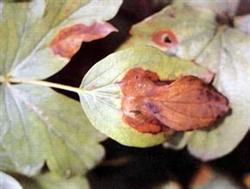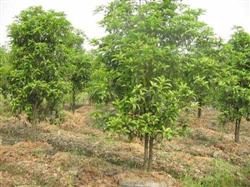Cultivation techniques of spider plant

Peony Magnolia Magnoliaceae, dew grass genus, alias: dew grass, flower vine grass, heart leaf ice flower, peony orchid flower, sun rose, sheep horn Cymbidium, cherry blossom. Morphological characteristics of peony orchid: perennial evergreen vine fleshy herbs. Branches about 20 cm long, leaves opposite, fleshy, bright green. The branches are angular and semi-creeping after elongation. The top of the branch blossoms and branches fork after flowering. The flower is deep rose red, the center is light yellow, resembles the chrysanthemum, the petal is narrow, has the luster, blooms one after another from spring to autumn. Growth habits: peony Cymbidium is native to South Africa and enjoys a sunny, dry and ventilated growth environment. Avoid high temperature and humidity, like sandy soil with good drainage. The suitable temperature for growth is 15-25 degrees Celsius. Maintenance is relatively simple, in addition to midsummer noon appropriate shade, other times of the year should be given sufficient light, especially in winter, to ensure the temperature at the same time, can be placed in the sunrise place to receive sunlight as much as possible. If it is placed in a place where there is not enough light for a long time, the color of the leaves is easy to be light, lack of vitality, and even the leaves fall, losing their ornamental value. Conditional friends can be placed outside the house from the beginning of spring. After sufficient irradiation, the plants have many flowers and bright colors, and the leaves are not easy to grow. Propagation and cultivation: cuttage propagation, carried out in the Spring and Autumn period, easy to survive. Note: it can also be cultivated indoors without direct solar astigmatism, and the branches can grow to several meters long, but do not blossom. In fact, the peony hanging orchid does not belong to the hanging orchid, because its branches are soft, elongated and semi-creeping, and the branches fall, which looks very similar to the hanging orchid, so it has been maintained as a hanging orchid. Its leaves are thick and emerald green; the orchid blossoms at the top of the branches, showing a rose color; the flowering period lasts from spring to autumn, and it can enjoy both flowers and leaves. It is one of the excellent potted flowers for decorating living rooms and windowsills. Peony orchid is not cold-resistant, you need to pay attention to it after entering autumn, you should pay attention to heat preservation after the weather turns cool, and those placed outdoors should be moved indoors to avoid cold in time to avoid frostbite. The peak growth period of peony orchid is from March to September every year, during which the water demand is relatively large, especially in the high temperature season in summer, while increasing the amount of water, we should also pay attention to the principle of not accumulating water in the basin, follow the principle of seeing dry and wet, and pour water thoroughly when the basin soil is dry. too much water is easy to cause rotting roots, and serious ones will die. Peony hanging orchid does not have high requirements for fertilizer and water, so it is OK to apply cake fertilizer and water every half a month or so in the growing season. After September, the peony orchid entered the growth slow period, at this time to gradually reduce the amount of water, in preparation for moving indoors for the winter.
- Prev

Control methods of Brown spot of Peony
Peony brown spot is a common disease in the later growth stage of peony. Symptoms: pale spots of different sizes appear on the leaf surface, usually round spots with a diameter of 3Mel and 7mm. There are 1-2 spots in a leaf, and up to 30 spots in a leaf. The middle of the spot gradually turns brown, and the front is scattered with very small black.
- Next

How to propagate Osmanthus fragrans by Cuttage
The nursery should choose sandy loam or light loam with good drainage. The soil is too sticky and should be properly mixed with sand to adjust the soil texture. In order to prevent the occurrence of blight and root rot, pesticides should be sprayed to disinfect the soil when making the bed. The bed should be high and the drainage must be unobstructed. Practice has proved that stagnant water after rain is the easiest to make.
Related
- Fuxing push coffee new agricultural production and marketing class: lack of small-scale processing plants
- Jujube rice field leisure farm deep ploughing Yilan for five years to create a space for organic food and play
- Nongyu Farm-A trial of organic papaya for brave women with advanced technology
- Four points for attention in the prevention and control of diseases and insect pests of edible fungi
- How to add nutrient solution to Edible Fungi
- Is there any good way to control edible fungus mites?
- Open Inoculation Technology of Edible Fungi
- Is there any clever way to use fertilizer for edible fungus in winter?
- What agents are used to kill the pathogens of edible fungi in the mushroom shed?
- Rapid drying of Edible Fungi

